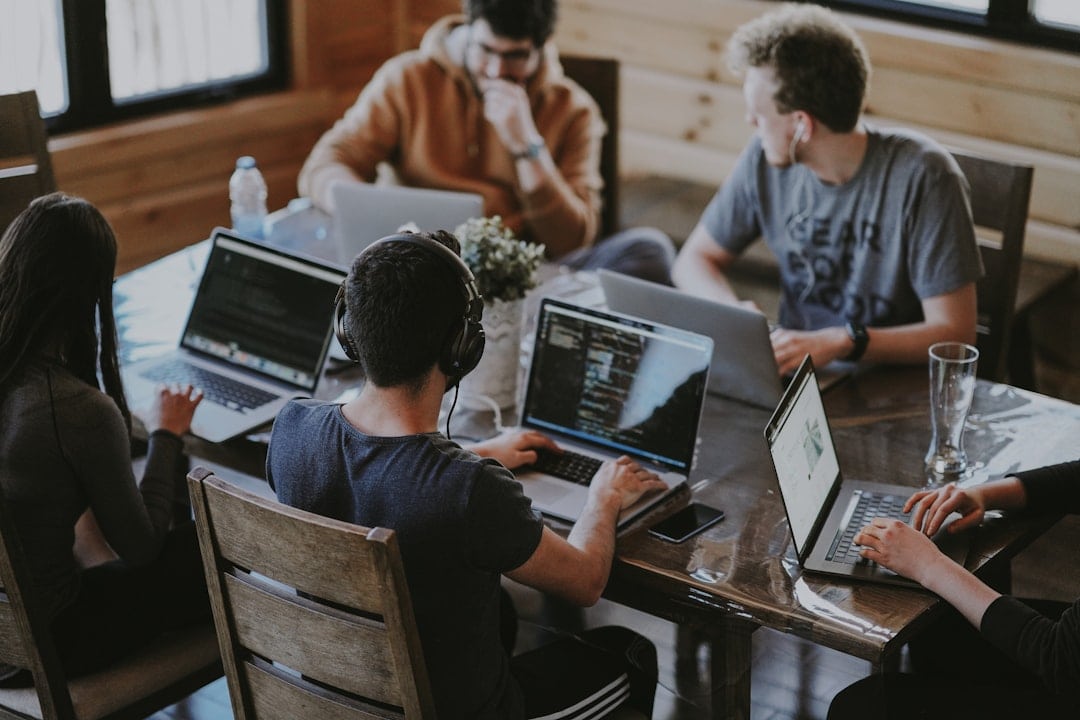Staying focused isn’t just a challenge, it’s a daily battle. We’re constantly bombarded by pings, pop-ups, and content vying for our attention. While technology brings unparalleled convenience, it also creates a minefield of distractions and disorganization. Enter digital decluttering, a modern necessity for maintaining mental clarity and boosting productivity.
This article explores how digital decluttering can help you regain control, reduce cognitive overload, and sharpen your focus, while seamlessly incorporating powerful practices, tools, and expert insights that make the difference.
The Hidden Cost of Digital Clutter
Digital clutter is more than just old files or unused apps. It’s a cognitive drain, a low-level hum of distraction that chips away at your ability to think clearly and prioritize.
A study published in the Journal of Digital Wellness found that excess digital stimuli can lead to increased stress, fragmented attention, and lower output. This mirrors what we know about physical clutter: your environment, real or digital, impacts your mindset.
“Humans tend to achieve better focus and memory retrieval when minimizing distractions and sticking to one task,” says psychotherapist Jordan Conrad. (Homes & Gardens)
Why Digital Decluttering Matters
Here’s how a clean digital space enhances productivity and mental well-being:
1. Improved Focus and Clarity
Messy desktops, overflowing inboxes, and constant alerts drain your mental bandwidth. Decluttering digital tools helps reduce background noise so you can focus on meaningful work.
2. Reduced Stress and Anxiety
According to a report on digital hoarding, the inability to manage digital content often correlates with emotional overwhelm. Clearing digital space can be a form of mental detox.
3. Enhanced Performance and Speed
Decluttering improves your device’s performance and your efficiency. Whether it’s loading apps faster or finding a file without digging through chaos, a clean setup means less friction.
4. Better Work-Life Boundaries
Remote workers, in particular, blur the lines between “home” and “office.” Organizing work-related digital spaces can help reinforce boundaries and reduce burnout.
Practical Steps to Declutter Your Digital Life
You don’t need a tech overhaul—just consistent habits. Start with these actions:
- Audit and Delete: Go through folders, emails, and apps. Delete what you don’t use.
- Create a Logical Folder Structure: Organize by project, client, or category.
- Limit Notifications: Only allow essential alerts from messaging or calendar apps.
- Empty Your Downloads Folder: Regularly clear this catch-all space.
- Use Cloud Storage Intentionally: Tools like Google Drive and Dropbox help organize documents, but they need maintenance too.
- Schedule Decluttering Sessions: Set monthly reminders to clean up files, emails, and photos.
Smart Tools That Support Digital Decluttering
Digital organization isn’t just about deletion, it’s about strategic management. Here are some tools to help you maintain order:
- Me – Instantly unsubscribe from spam emails.
- Freedom or Cold Turkey – Block distracting websites or apps.
- Notion or Evernote – Centralize your notes and to-do lists.
- Clean Email – Bulk manage your inbox with filters and smart folders.
- Dropbox/Google Drive – Use versioning, structured folders, and shared access to avoid clutter.
And for data professionals, a powerful tip is connecting Google Sheets to Power BI. This integration streamlines data pipelines, letting you visualize insights in real-time instead of getting lost in multiple spreadsheets. It’s a prime example of how decluttering isn’t just about deleting, it’s about designing smarter systems.
Subtle Habits That Pay Off

Not all decluttering requires a major overhaul. Small habits matter:
- Name files clearly: “Final_v2_EDITED_USE_THIS_ONE” is not clarity. Be descriptive and consistent.
- Archive messages instead of deleting: For instance, WhatsApp archiving lets you hide conversations without losing them—keeping your inbox focused on current priorities.
- Use email folders and filters: Auto-sorting incoming emails saves time and mental energy.
Expert Endorsements
Digital wellness isn’t a trend—it’s a movement. Experts agree that managing digital environments is essential to mental health:
“Only storing what’s absolutely necessary can help digital hoarders feel less overwhelmed,” says Dr. Susan Albers, psychologist at the Cleveland Clinic.
(NY Post)
Marie Kondo, in collaboration with the digital mindfulness company Stolp, introduced a “phone home” box that encourages users to put their devices away to disconnect intentionally, highlighting the growing importance of digital decluttering in lifestyle design.
Time Saving Tools
In a world overflowing with information, staying informed without feeling overwhelmed is tough. For example, if you want to distill long content (articles, policy docs, reports… ) into concise overviews, that’s where text summarize tools shine.
Popular tools like SMMRY, QuillBot, and even AI models like ChatGPT can generate clear, digestible summaries that let you extract value fast. It’s not just a time-saver, it’s a focus amplifier. Summarizing is to digital reading what speed-cleaning is to your workspace: it brings clarity fast.
The Psychological Side of Digital Decluttering
This practice is about more than organization, it’s about confronting digital habits that hold you back. For many, the clutter accumulates during periods of stress, transition, or indecision. Over time, this builds invisible walls between intention and action.
Going beyond obstacles means recognizing when digital noise becomes emotional baggage. Whether it’s clearing hundreds of unread messages or purging old notes from abandoned projects, every step of decluttering is a signal to yourself: I’m choosing clarity.
Ali Abdaal, a productivity expert and former doctor, puts it well:
“When your digital life is organized, your mental bandwidth expands. You spend less time managing chaos and more time creating.”
Decluttering Data Workflows
Researchers, marketers, and academics know the chaos that comes with poor data handling. That’s where survey platforms for research come in. Tools like Qualtrics, Google Forms, and Typeform simplify data collection, centralize responses, and offer built-in analysis tools.
By setting up clean survey templates, exporting into organized formats, and integrating with platforms like Airtable or Excel, you eliminate mess before it begins. A decluttered survey workflow improves your credibility, saves time, and supports better decision-making.
Benefits of Digital Decluttering
1. Enhanced Focus and Mental Clarity
A cluttered digital environment can be mentally exhausting. Constant notifications, full inboxes, and disorganized files make it hard to stay focused. Digital decluttering isn’t just about deleting old files, it’s about creating a purposeful, organized online space that allows you to engage only with what matters.
2. Reduced Stress and Anxiety
Just as physical clutter can hinder productivity and create stress, digital clutter can lead to cognitive overload and anxiety. Research shows that a cluttered digital environment can negatively impact our mental health. A study published in the journal Environment and Behavior found that individuals who perceived their digital environment as cluttered experienced higher levels of stress and lower productivity.
- Improved Device Performance
Accumulated digital clutter can slow down devices, leading to frustration and decreased efficiency. Regularly deleting unnecessary files and apps can enhance device performance.
4. Better Work-Life Balance
For freelancers and remote workers, digital decluttering can help establish clear boundaries between work and personal life. An orderly digital workspace minimizes distractions, allowing for more quality time with loved ones and personal pursuits.
Practical Steps to Declutter Your Digital Life
- Audit Your Digital Assets: Identify and categorize files, apps, and emails.
- Delete Unnecessary Files and Apps: Remove items that are no longer needed.
- Organize Remaining Files: Create a structured folder system for easy access.
- Manage Emails: Unsubscribe from irrelevant newsletters and organize your inbox with folders and labels.
- Limit Notifications: Adjust settings to receive only essential alerts.
- Schedule Regular Decluttering Sessions: Set aside time weekly or monthly to maintain digital cleanliness.
FAQ – Digital Decluttering
Q1: How often should I declutter digitally?
A: Light weekly maintenance and deep monthly cleanups work well for most users.
Q2: Is digital decluttering good for mental health?
A: Yes. It reduces stress, anxiety, and decision fatigue, much like physical tidying.
Q3: What’s the best tool for email cleanup?
A: Try Unroll.Me or Clean Email to mass unsubscribe and organize inboxes.
Q4: How do I declutter research data?
A: Use structured survey platforms for research, and export clean data formats for easier analysis.
Q5: What’s a fast way to digest long documents?
A: Use text summarize tools like SMMRY or ChatGPT to pull key ideas quickly.
Final Thoughts
Decluttering your digital life is a powerful act of self-care. From streamlining your data pipelines to minimizing distractions that hinder focus, the goal remains the same: clarity.
A clearer screen means a clearer mind. And in a world of endless noise, clarity is your most powerful productivity tool.

